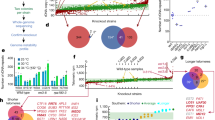Abstract
Saccharomyces cerevisiae, for centuries the yeast that has been the workhorse for the fermentative production of ethanol, is now also a model system for biological research. The recent development of chromosome-splitting techniques has enabled the manipulation of the yeast genome on a large scale, and this has allowed us to explore questions with both biological and industrial relevance, the number of genes required for growth and the genome organization responsible for the ethanol production. To approach these questions, we successively deleted portions of the yeast genome and constructed a mutant that had lost about 5% of the genome and that gave an increased yield of ethanol and glycerol while showing levels of resistance to various stresses nearly equivalent to those of the parental strain. Further systematic deletion could lead to the formation of a eukaryotic cell with a minimum set of genes exhibiting appropriately altered regulation for enhanced metabolite production.






Similar content being viewed by others
References
DeRisi JL, Iyer VR, Brown PO (1997) Exploring the metabolic and genetic control of gene expression on a genomic scale. Science 278:680–686
Eisen MB, Spellman PT, Brown PO, Botstein D (1998) Cluster analysis and display of genome-wide expression patterns. Proc Natl Acad Sci USA 95:14863–14868
Forster AC, Church GM (2006) Towards synthesis of a minimal cell. Mol Syst Biol 2:45
Galperin MY (2006) The minimal genome keeps growing. Environ Microbiol 8:569–573
Gietz RD, Woods RA (2002) Transformation of yeast by lithium acetate/single-stranded carrier DNA/polyethylene glycol method. Methods Enzymol 350:87–96
Glass JI, Assad-Garcia N, Alperovich N, Yooseph S, Lewis MR, Maruf M, Hutchison CA 3rd, Smith HO, Venter JC (2006) Essential genes of a minimal bacterium. Proc Natl Acad Sci USA 103:425–430
Gueldener U, Heck S, Fiedler T, Beinhauer J, Hegemann JH (1996) A new efficient gene disruption cassete for repeated use in budding yeast. Nucleic Acids Res 24:2519–2524
Gueldener U, Heinisch J, Koehler GJ, Voss D, Hegemann JH (2002) A second set of loxp marker cassettes for cre-mediated multiple gene knockouts in budding yeast. Nucleic Acids Res 30:e23
Ihmels J, Bergmann S, Gerami-Nejad M, Yanai I, McClellan M, Berman J, Barkai N (2005) Rewiring of the yeast transcriptional network through the evolution of motif usage. Science 309:938–940
Ishibashi K, Suzuki K, Ando Y, Takakura C, Inoue H (2006) Nonhomologous chromosomal integration of foreign DNA is completely dependent on mus-53 (human lig4 homolog) in neurospora. Proc Natl Acad Sci USA 103:14871–14876
Johnston M, Carlson M (1992) The molecular and cellular biology of the yeast Saccharomyces cerevisiae, Vol. 2 pp. 193–281. eds. Jones EW, Pringle JR, Broach JR. Cold Spring Harbor Laboratory Press, Cold Spring Harbor New York
Nishizawa M, Katou Y, Shirahige K, Toh-e A (2004) Yeast pho85 kinase is required for proper gene expression during the diauxic shift. Yeast 21:903–918
Rose MD, Winston F, Hieter P (1990) Methods in yeast genetics. Cold Harbor Spring Laboratory, Cold Spring Harbor New York
Shampay J, Szostak JW, Blackburn EH (1984) DNA sequences of telomeres maintained in yeast. Nature 310:154–157
Sugiyama M, Nishizawa M, Hayashi K, Kaneko Y, Fukui K, Kobayashi A, Harashima S (2003) Repeated chromosome splitting targeted to δ sequences in Saccharomyces cerevisiae. J Biosci Bioeng 96:397–400
Sugiyama M, Ikushima S, Nakazawa T, Kaneko Y, Harashima S (2005) PCR-mediated repeated chromosome splitting in Saccharomyces cerevisiae. Biotechniques 38:909–914
Thomson JM, Gaucher EA, Burgan MF, De Kee DW, Li T, Aris JP, Benner SA (2005) Resurrecting ancestral alcohol dehydrogenases from yeast. Nature Genetics 37:630–635
Widianto DE, Yamamoto 3M, Sugiyama M, Mukai Y, Kaneko Y, Oshima Y, Nishizawa M, Harashima S (2003) Creating Saccharomyces cerevisiae haploid strain having 21 chromosomes. J Biosci Bioeng 96:89–94
Wolfe KH, Shields DC (1997) Molecular evidence for an ancient duplication of the entire yeast genome. Nature 387:708–713
Acknowledgments
We thank Y. Katou and K. Shirahige for their help in GeneChip analysis, and J. Tkacz for reading and comments on the manuscript. This work was supported by the Project for Development of a Technological Infrastructure for Industrial Bioprocesses on R&D of METI and NEDO.
Author information
Authors and Affiliations
Corresponding author
Rights and permissions
About this article
Cite this article
Murakami, K., Tao, E., Ito, Y. et al. Large scale deletions in the Saccharomyces cerevisiae genome create strains with altered regulation of carbon metabolism. Appl Microbiol Biotechnol 75, 589–597 (2007). https://doi.org/10.1007/s00253-007-0859-2
Received:
Revised:
Accepted:
Published:
Issue Date:
DOI: https://doi.org/10.1007/s00253-007-0859-2




